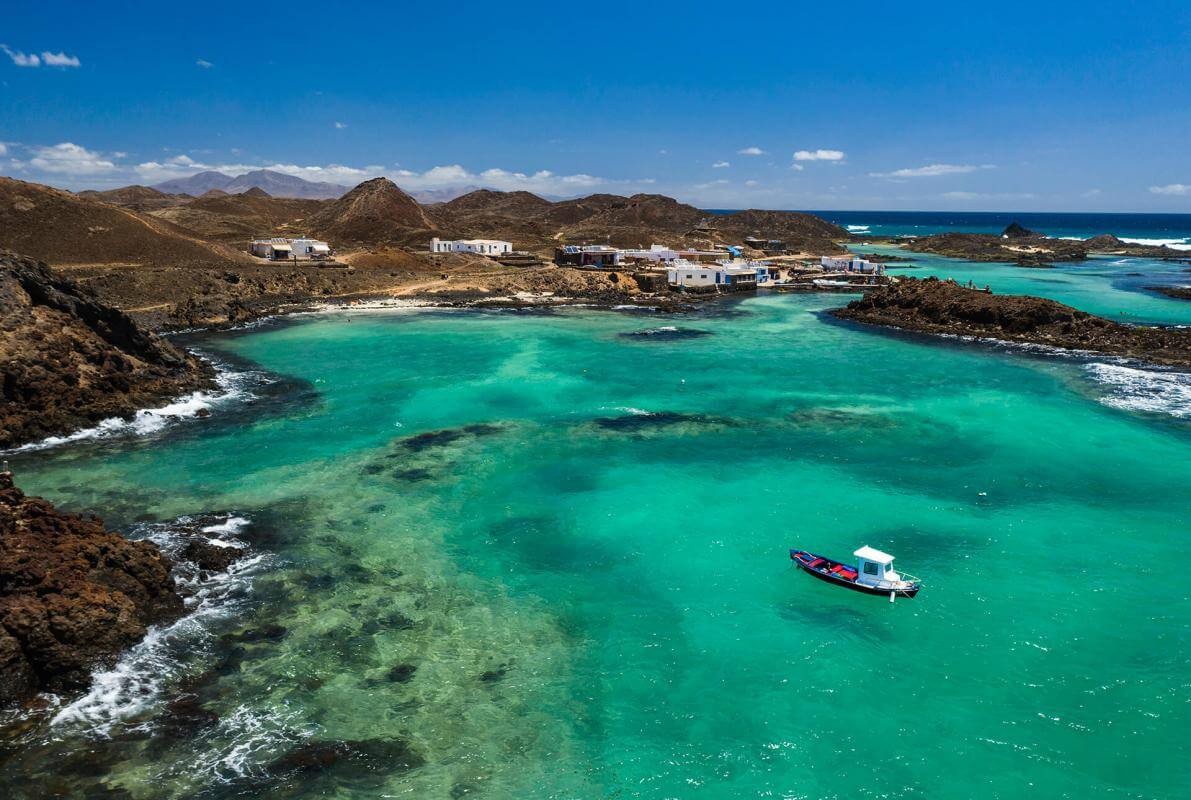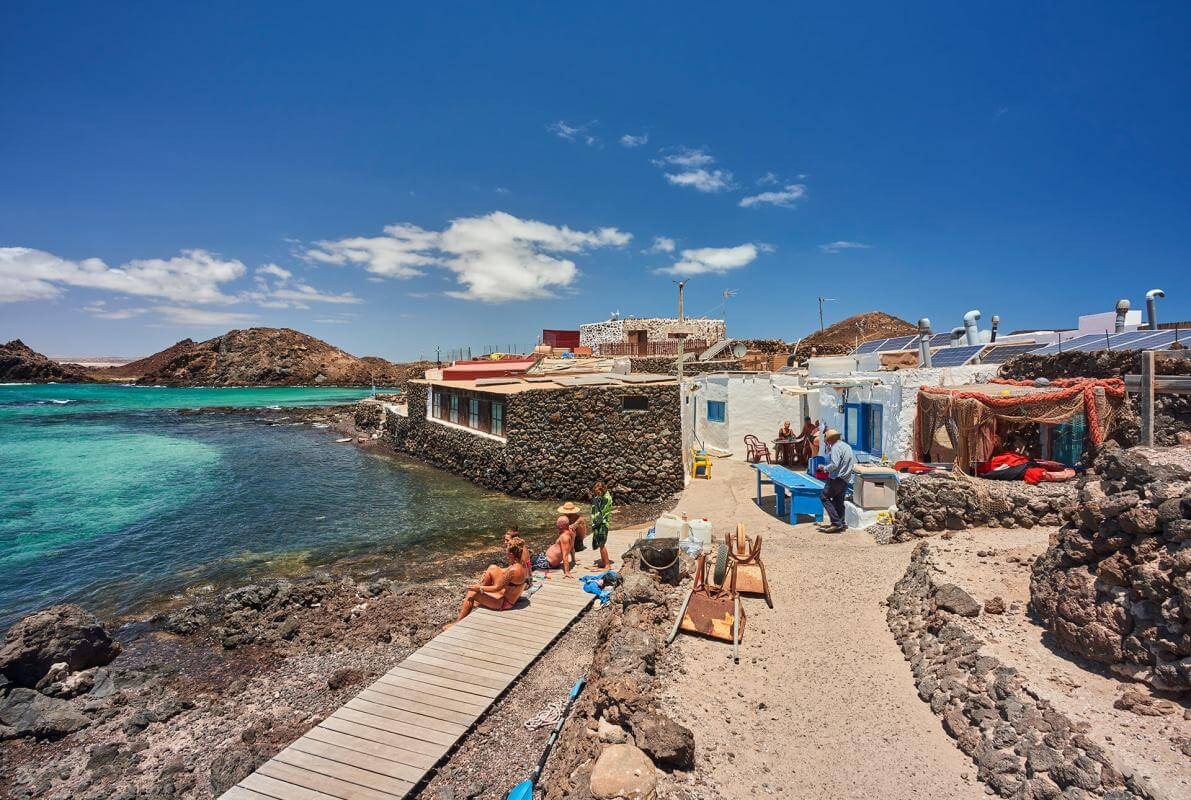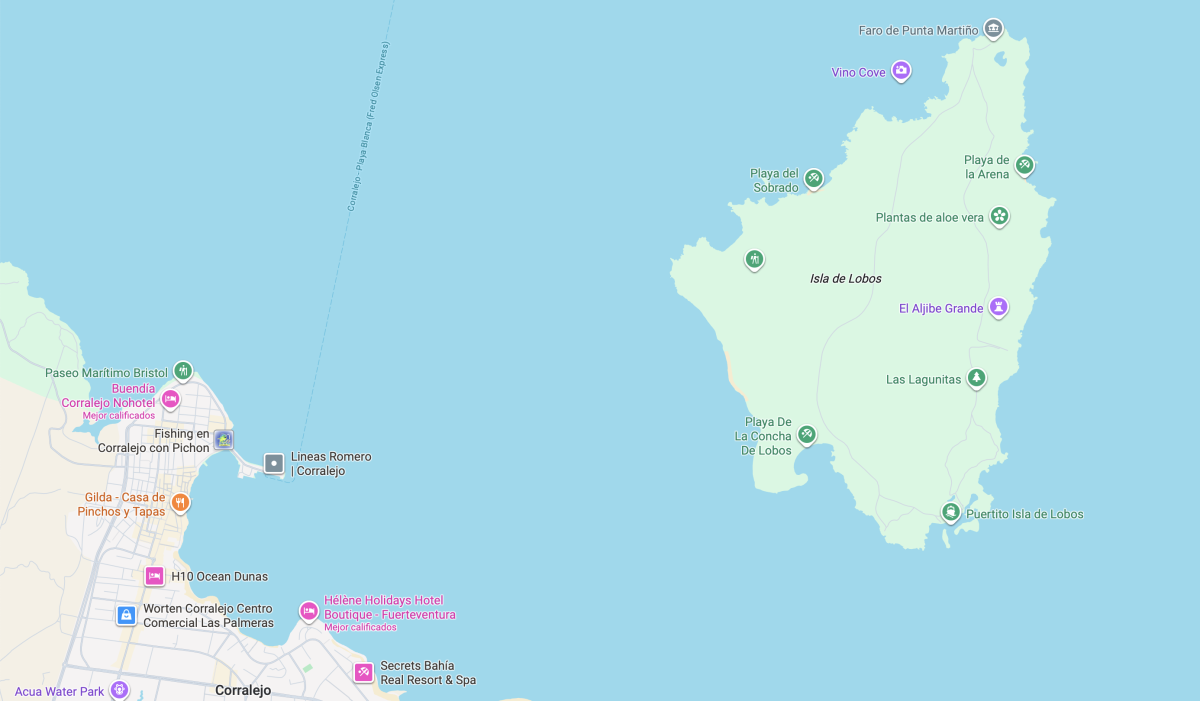
Many people are fond of the Canary Islands, and those who know the archipelago well understand that its size can be deceiving – the number of places to discover is almost endless.
One destination not to be missed if you’re seeking a genuine connection with nature is Isla de Lobos, a small, virtually uninhabited island that can be explored entirely on foot. Visitor numbers are limited, and it’s the island’s native species that truly set the rules.
A small, protected and almost uninhabited islet
Lobos is a place rich in history – its name derives from the monk seals, or sea lions, that once inhabited its waters. Research by the University of La Laguna (Tenerife) has also revealed evidence of a Roman presence, including a settlement where purple dye was produced from a species of mollusc found in the area.
Isla de Lobos was later frequented by pirates until around 1860, offering an ideal refuge for repairing their ships thanks to its lack of inhabitants. The construction of the Punta Martiño lighthouse at the northern tip of the islet brought these incursions to an end and led to the establishment of a small settlement in the area.

The islet also passed through private ownership during the 19th and 20th centuries. Finally, with its designation as a natural park in 1982, it became virtually uninhabited, having previously escaped several urban development projects aimed at its tourist exploitation.
In fact, until 2007, the islet was owned by Riu Hotels & Resorts, which eventually ceded the property to the Ministry for the Environment in exchange for an extension of the concession allowing the company to occupy the land on which two of its hotels stand – in the heart of the Corralejo Dunes Natural Park. These hotels predate both the Coastal Law and the Natural Park designation, legislation that would now prohibit their construction.
Moreover, in 1994, the islet was declared a Special Protection Area for Birds within the Natura 2000 Network.
Requirements for visiting Lobos Island
The islet lies to the northwest of Fuerteventura, in the Bocaina Strait, and covers an area of around 6 km². It’s small enough to walk from one end to the other in about an hour – and, in fact, walking or cycling are the only ways to get around.
It is separated from Fuerteventura by just 2 km of sea, and sits around 8 km from Lanzarote.

To visit the island, you’ll need to keep the following in mind:
- Advanced reservations are required, as the number of daily visitors is limited to 200.
- Overnight stays on Lobos are not permitted. The nearest accommodation is in Corralejo, which is connected to the islet by sea.
Find holiday rentals in Corralejo and visit Lobos Island.
- To enter the park, you must obtain authorisation from the Fuerteventura Council, which can be requested via this link. You may reserve up to three places per application, starting five days before your intended visit.
- You’ll also need to book a ferry to reach the islet (although catamarans and water taxis are available too). Upon arrival, you must present your authorisation, as it is the only document that grants access to the park.
From Corralejo to the island, you’ll sail along the northeastern coast of Fuerteventura, enjoying exceptional views of the Corralejo Dunes. The journey takes around 15 minutes, after which you’ll disembark in a peaceful, pedestrian-only area. Once there, you’ll find plenty of information on the different routes available to explore and appreciate the islet’s natural beauty.

Hikes, beaches and unique nature on Isla de Lobos
More than 130 plant species and several bird species inhabit the island, including the herring gull, houbara bustard and Scopoli's shearwater. Its seabed, designated as an underwater reserve, is also home to a remarkable wealth of marine biodiversity. The island’s flora, fauna and dune systems are among its main attractions.
One of the best ways to explore the islet is by following the Lighthouse Trail, a 10 km circular hike that begins in El Puertito and passes key landmarks, including the Punta Martiño Lighthouse. The walk takes around two and a half hours at a relaxed pace. Along the way, keep an eye out for native plants such as the Lobos everlasting flower, sea grape and sweet tabaiba.

Lobos Island also offers stunning white-sand beaches and crystal-clear waters, perfect for enjoying the peace and natural beauty of its surroundings. La Calera, La Concha and El Puertito are the largest beaches, though there are many smaller coves where you can lose yourself in nature.
A visit to Las Lagunitas is also highly recommended, particularly for birdwatching, as is a hike up La Caldera mountain to take in the island’s highest and most spectacular views.
If you’d like to dine on Isla de Lobos, be sure to book ahead at its only restaurant, Chiringuito Lobos Antoñito El Farero, located in El Puertito.
Respecting Isla de Lobos
Respect for the environment is a priority that every visitor must observe, including strict control over waste generation.
It’s important to come well-prepared to ensure a smooth and enjoyable visit: bring plenty of water and snacks, along with high-factor sun protection, a hat and comfortable footwear suitable for walking on uneven terrain.
Visitors are also reminded to take all waste back with them. Activities such as building stone piles, feeding wildlife, collecting natural elements (such as plants, shells or sand), lighting fires, making excessive noise, fishing outside authorised areas or misusing public spaces and facilities are strictly prohibited.
